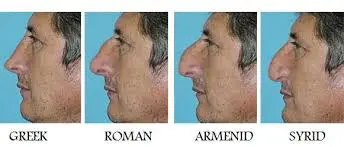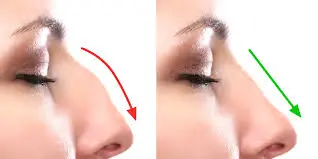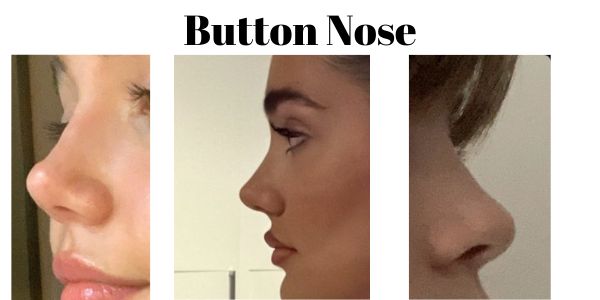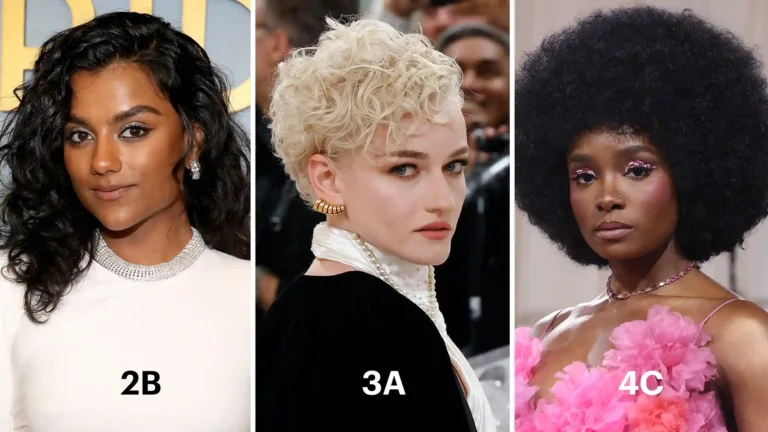Nose shapes vary significantly across ethnicities, and two of the most historically recognized and aesthetically discussed shapes are the Greek nose and the Roman nose. These nose types have been associated with beauty, power, and even personality traits. But what exactly differentiates a Greek nose from a Roman nose? And which one is considered more attractive? Let’s explore the differences, cultural perceptions, and how these nose types fit within the broader spectrum of nose types by ethnicity.
Greek Nose vs Roman Nose
What is a Greek Nose Shape?
A Greek nose is characterized by a straight bridge with no visible bumps or curves. It is often regarded as a sign of classical beauty, commonly depicted in ancient Greek sculptures and art.
Key Features of a Greek Nose:
- Straight, smooth bridge
- No dorsal hump
- Balanced proportions
- Often associated with Greek nose female beauty standards
Greek noses are often considered aesthetically pleasing due to their symmetry and defined structure. Many plastic surgeons aim to achieve a Greek nose look when performing rhinoplasty on individuals seeking refinement.
What is a Roman Nose Shape?
A Roman nose, also known as an aquiline nose, features a prominent bridge that curves slightly or significantly outward. It is often associated with strength, authority, and leadership due to its historical representation in figures like Julius Caesar and Napoleon Bonaparte.
Key Features of a Roman Nose:
- Curved or slightly hooked bridge
- Prominent nasal structure
- Strong and defined profile
- Often found in nose types by ethnicity such as Mediterranean, Middle Eastern, and European populations
Greek Nose vs. Roman Nose: Key Differences
| Feature | Greek Nose | Roman Nose |
|---|---|---|
| Bridge Shape | Straight | Curved or Hooked |
| Symmetry | Highly Symmetrical | Slightly Asymmetrical |
| Aesthetic Appeal | Seen as Classical Beauty | Associated with Strength & Power |
| Common in | Greek, European, Mediterranean Ethnicities | Roman, Middle Eastern, Mediterranean |
| Influence | Ancient Greek Sculptures | Historic Leaders & Warriors |
The main difference between a Greek nose and a Roman nose lies in the bridge: Greek noses are straight, while Roman noses have a slight to prominent curve.

Which Ethnicity Has a Roman Nose?
The Roman nose shape is most commonly found in people of Mediterranean, Middle Eastern, and South Asian descent. It is also prevalent among Europeans with ancestry tracing back to Roman influence. Some African and Nubian nose variations also show similarities to the Roman nose, particularly in elongated and structured forms.
Is the Roman Nose Shape Attractive?
Beauty is subjective, and while some may consider the Greek nose female shape as the epitome of symmetry, others find the Roman nose’s strong profile highly appealing. Many historical and modern figures with Roman noses are seen as commanding, charismatic, and attractive due to their unique features.
Perceptions of the Roman Nose:
- Often linked with intelligence and leadership
- Preferred in some fashion and modeling industries due to its sharp angles
- Enhances facial character, making individuals stand out
Conversely, the Greek nose shape is often sought after for its soft, refined look, making it a popular choice in cosmetic rhinoplasty.

Other Prominent Nose Shapes
While Greek and Roman noses are widely discussed, there are several other unique nose types:
- Aquiline Nose vs. Roman Nose: The terms are often used interchangeably, but aquiline noses tend to have a more hawk-like shape.
- Hawk Nose Shape: Similar to a Roman nose but with a more pronounced downward curve.
- Button Nose: Small, slightly upturned nose, often seen as youthful and cute.
- Nubian Nose: Common among African ethnicities, featuring a wider base and a longer bridge.
These nose shapes vary across cultures and ethnicities, showing the vast diversity of facial structures worldwide.
Conclusion
The Greek nose and Roman nose each hold their own historical, cultural, and aesthetic significance. Whether someone prefers the straight, symmetrical Greek nose female look or the bold, defined Roman nose shape, both are uniquely beautiful in their own way.
Understanding these nose types helps in appreciating facial diversity, whether for personal knowledge, aesthetic considerations, or medical and cosmetic treatments. If you’re considering rhinoplasty or simply curious about types of noses, recognizing the differences between a Greek nose vs. Roman nose is a great place to start!
Frequently Asked Questions
What is the difference between a Greek nose and a Roman nose?
A Greek nose has a straight, smooth bridge with no bumps, often seen in classical sculptures. A Roman nose (also called an aquiline nose) has a slightly curved or prominent bridge, giving it a strong, defined profile
Which ethnicity has a Roman nose?
The Roman nose shape is commonly found in people of Mediterranean, European, Middle Eastern, and South Asian descent. It is often linked to Roman, Greek, and Persian ancestry.
Is a Roman nose attractive?
Yes! The Roman nose is often associated with leadership, intelligence, and strong character. While some prefer a straight Greek nose, Roman noses have a unique charm and are highly valued in fashion and modeling.
What is a Greek nose shape?
A Greek nose has a perfectly straight bridge, making it one of the most desired nose shapes in rhinoplasty. It symbolizes classical beauty and symmetry.
What is an aquiline nose vs. a Roman nose?
An aquiline nose and a Roman nose are similar, but an aquiline nose has a more hawk-like downward curve, while a Roman nose can have a gentler, more prominent curve.
How do nose types vary by ethnicity?
Greek Nose → Found in Europeans, Greeks
Roman Nose → Found in Mediterranean, Middle Eastern, and Roman-influenced ethnicities
Button Nose → Common in East Asians, some Caucasians
Nubian Nose → Found in African and African-American populations
Hawk Nose → Common in Jewish, Middle Eastern, and some Mediterranean ethnicities
Which nose shape is considered most attractive?
Attractiveness is subjective, but the Greek nose is often seen as a standard of beauty due to its symmetry, while the Roman nose is admired for its strong and powerful appearance.
What does it mean if you have a Roman nose?
Having a Roman nose means your nose has a prominent, slightly curved bridge, often linked to leadership, confidence, and intelligence in historical and cultural contexts.
Is a Roman nose shape attractive?
Yes! A Roman nose is often associated with strong facial features and a regal appearance. Many find it attractive due to its bold and striking profile.
What ethnicity is a Roman nose?
The Roman nose is most commonly found in Mediterranean, Middle Eastern, South Asian, and some European populations, often linked to Roman and Greek ancestry.
How rare is a Roman nose?
A Roman nose is less common than straight or button noses. While it varies by ethnicity, it is considered a distinct and unique feature that stands out.
What is a Greek nose?
A Greek nose has a perfectly straight bridge with no bumps, often associated with classical beauty, symmetry, and balance in facial aesthetics.
What is a Roman nose shape?
A Roman nose shape features a high bridge with a slight curve or arch, giving it a bold and well-defined profile, often linked to historical figures and leaders.
What are the different types of noses?
Nose shapes vary by ethnicity and genetics. Common types include:
Greek Nose – Straight bridge, classic beauty
Roman Nose – Curved bridge, strong features
Button Nose – Small and slightly upturned
Nubian Nose – Wide bridge, rounded tip
Hawk Nose – Sharp, downward curve
Do women have Roman noses?
Yes! Roman noses are found in both men and women. Many women with Roman noses embrace their unique and strong facial features, which are often admired in fashion and modeling.
Aquiline nose vs. Roman nose – what’s the difference?
An aquiline nose and a Roman nose are similar, but an aquiline nose has a more pronounced downward curve (hawk-like), while a Roman nose has a softer, more prominent bridge.
Roman nose vs. Greek nose – which is more attractive?
Attractiveness is subjective. The Greek nose is admired for its symmetry and smoothness, while the Roman nose is valued for its distinctive and powerful appearance.
What does a Roman nose say about personality?
Historically, a Roman nose is linked to leadership, ambition, and strong determination. People with this nose shape are often perceived as confident and assertive.
Do Roman noses look better on men?
A Roman nose is considered masculine due to its strong, defined shape, but it also enhances women’s facial features, making them look elegant and unique.






